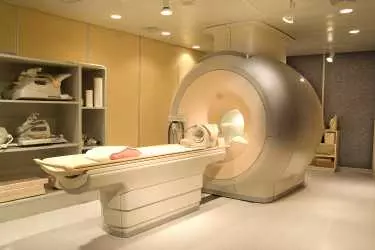
Skin is a seamless organ, like a fine cloth protecting valuable assets. Imagine a piece of silk where one small tear can make a big difference in how it looks. The case with the skin is the same where any burn or injury can cause a scar.
Scarring is a natural part of the healing process after an injury. Its appearance and its treatment depends on multiple factors. The depth and size of the scar and the location of the injury matters. So does your age, genes, sex, and ethnicity.
These are several kinds of scars some of which are :
![]() Keloid scars - These scars are the result of an overly aggressive healing process. They extend beyond the original injury. Over time, a keloid scar may hamper movement. Keloid scars are most common among people with dark skin.
Keloid scars - These scars are the result of an overly aggressive healing process. They extend beyond the original injury. Over time, a keloid scar may hamper movement. Keloid scars are most common among people with dark skin.
![]() Contracture scars - If your skin has been burned, you may have a contracture scar. These scars tighten skin, which can impair your ability to move. Contracture scars may also go deeper, affecting muscles and nerves.
Contracture scars - If your skin has been burned, you may have a contracture scar. These scars tighten skin, which can impair your ability to move. Contracture scars may also go deeper, affecting muscles and nerves.
![]() Hypertrophic scars - These are raised, red scars that are similar to keloids but do not go beyond the boundary of the injury.
Hypertrophic scars - These are raised, red scars that are similar to keloids but do not go beyond the boundary of the injury.
![]() Acne scars - If you've had severe acne, you probably have the scars to prove it. There are many types of acne scars, ranging from deep pits to scars that are angular or wavelike in appearance.
Acne scars - If you've had severe acne, you probably have the scars to prove it. There are many types of acne scars, ranging from deep pits to scars that are angular or wavelike in appearance.

Scar treatments may include:
![]() Over-the-counter or prescription creams, ointments, or gels - These products can be used to treat scars that are caused by cuts or other injuries or wounds. If you are under the care of a plastic surgeon and your scarring is from cosmetic or plastic surgery, ask your surgeon if over-the-counter treatment is an option. If not, there are prescriptions that may help. Often, treatments can include steroids or certain antihistamine creams for scars that cause itching and are very sensitive. Likewise, if you have scarring from severe acne, ask your dermatologist for advice. Your doctor can also recommend or use pressure treatment or silicone gel sheetings to help treat scars or as preventive care.
Over-the-counter or prescription creams, ointments, or gels - These products can be used to treat scars that are caused by cuts or other injuries or wounds. If you are under the care of a plastic surgeon and your scarring is from cosmetic or plastic surgery, ask your surgeon if over-the-counter treatment is an option. If not, there are prescriptions that may help. Often, treatments can include steroids or certain antihistamine creams for scars that cause itching and are very sensitive. Likewise, if you have scarring from severe acne, ask your dermatologist for advice. Your doctor can also recommend or use pressure treatment or silicone gel sheetings to help treat scars or as preventive care.
![]() Surgical removal or treatment - There are many options to treat deeper scars depending on your particular case. These include skin grafts, excision, dermabrasion, or laser surgery. In a skin graft, the surgeon uses skin from another area of your body. This is often used with people who've had burns. If you've got scarring that impairs function, surgery can help address the functional problems. If you've recently had surgery that has caused scars, it is best to wait at least one year before making a decision about scar treatment. Many scars fade and become less noticeable over time.
Surgical removal or treatment - There are many options to treat deeper scars depending on your particular case. These include skin grafts, excision, dermabrasion, or laser surgery. In a skin graft, the surgeon uses skin from another area of your body. This is often used with people who've had burns. If you've got scarring that impairs function, surgery can help address the functional problems. If you've recently had surgery that has caused scars, it is best to wait at least one year before making a decision about scar treatment. Many scars fade and become less noticeable over time.
![]() Injections - You may get steroid injections to treat scars that stick out, such as keloids or hypertrophic scars. Your doctor may use this on its own or with other treatments.
Other types of injections, such as collagen or other "fillers," may be useful for some types of pitted scarring, although these are not usually permanent solutions.
Injections - You may get steroid injections to treat scars that stick out, such as keloids or hypertrophic scars. Your doctor may use this on its own or with other treatments.
Other types of injections, such as collagen or other "fillers," may be useful for some types of pitted scarring, although these are not usually permanent solutions.

A new fad has been developing over the last few years and this is getting the body tattooed. Some people who are in relationship get tattoes made in the name of their partner and when the relationship goes awry they are looking for tattoo removal solutions.
Depending on the size and color of your tattoo, the number of treatments will vary. Your tattoo may be removed in two to four visits but in some cases it may take as many as 10 sessions. You should schedule a consultation, during which time a trained professional will evaluate your personal situation and advise you on the process.
Treatment with the laser varies from patient to patient depending on the age, size, and type of tattoo (amateur or professional). The color of the patient's skin, as well as the depth to which the tattoo pigment extends, will also affect the removal technique.
Laser tattoo removal has become much more effective with very little risk of scarring. Laser treatment is often safer than many traditional methods such as excision,dermabrasion or salabrasion (using moist gauze pads saturated with a salt solution to abrade the tattooed area) because of its unique ability to selectively treat pigment involved in the tattoo.
In many cases, certain colors may be more effectively removed than others. It is known that blue/black tattoos respond particularly well to laser treatment -- the response of other colors is under investigation
A good hospital needs to have qualified doctors with good experience. Most of the hospitals in the vicinity offer services of doctors who either do not have proper qualifications or do not possess requisite experience. We do not claim to be a tertiary care hospital providing services across all the streams of medicine and surgery but whatever service you get at Yashlok Hospital are first class in terms of quality.

We are probably the only hospital which has an inhouse Ultrasound and Colour Doppler facility. The hospital has state of art Digital X-Ray, ECG, Pathology Lab, Dental Centre, Physiotherapy Centre and Inhouse Pharmacy. The operating room at the hospital has the deployment of cutting edge technology which gives us the confidence of doing the most complex of the surgeries with relative ease.

Healthcare is a very different stream from any other service industry. People come to us only when they are in a problem which they are not able to understand. All our team members are thoroughly trained to provide the medical care with highest ethical standards and with compassion and empathy. The entire care programme is designed keeping the centricity of the patient in mind.

Dr Rajesh Choudhary is talking to Ms. Chitra Sharma of 24 TV Network about Brain Stroke Prevention and Cure. Stroke is a very debilitating disease and lots of information needs to be shared in order to prevent brain stroke and its consequences.
Breast Cancer is one of the most common cancer amongst women and if it is not diagnosed timely and given proper treatment then it could turn out to be a killer. Dr Sumita Singh is one of the most renowned breast cancer specialist in India and she is talking about Breast Cancer in this Video.